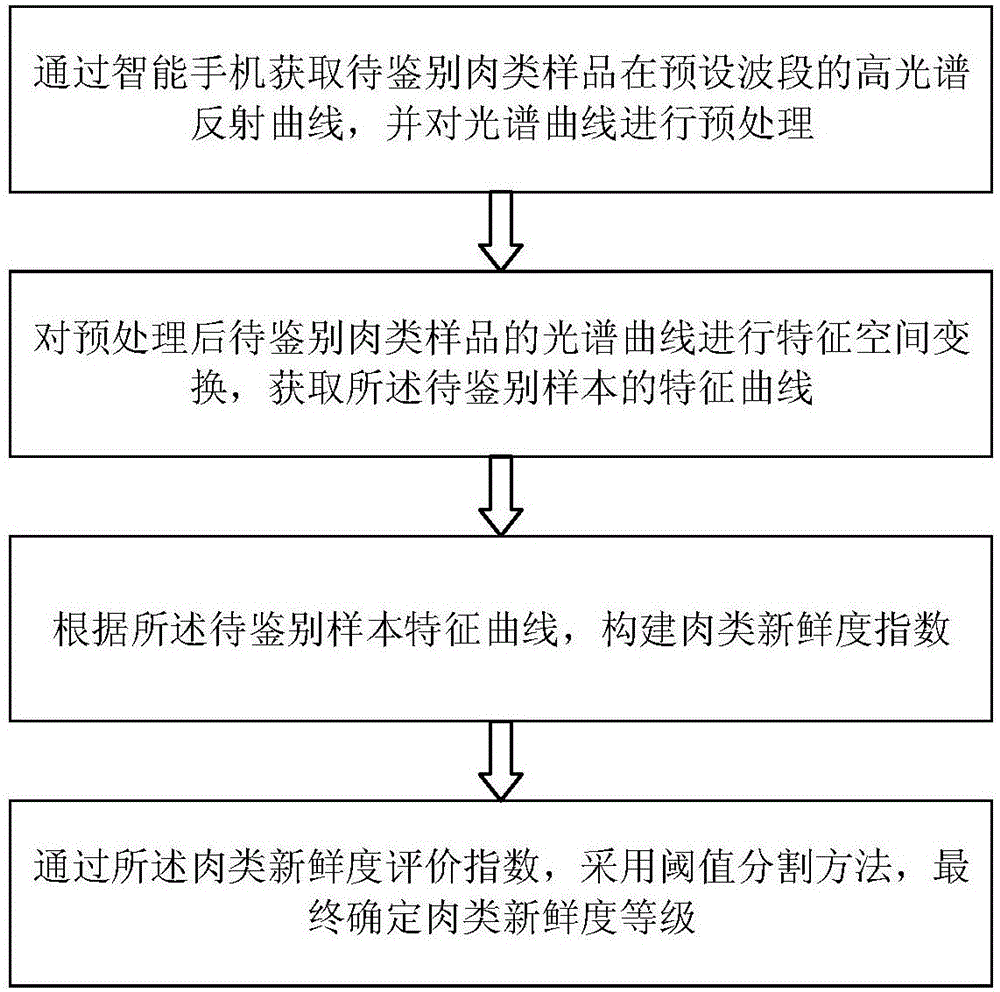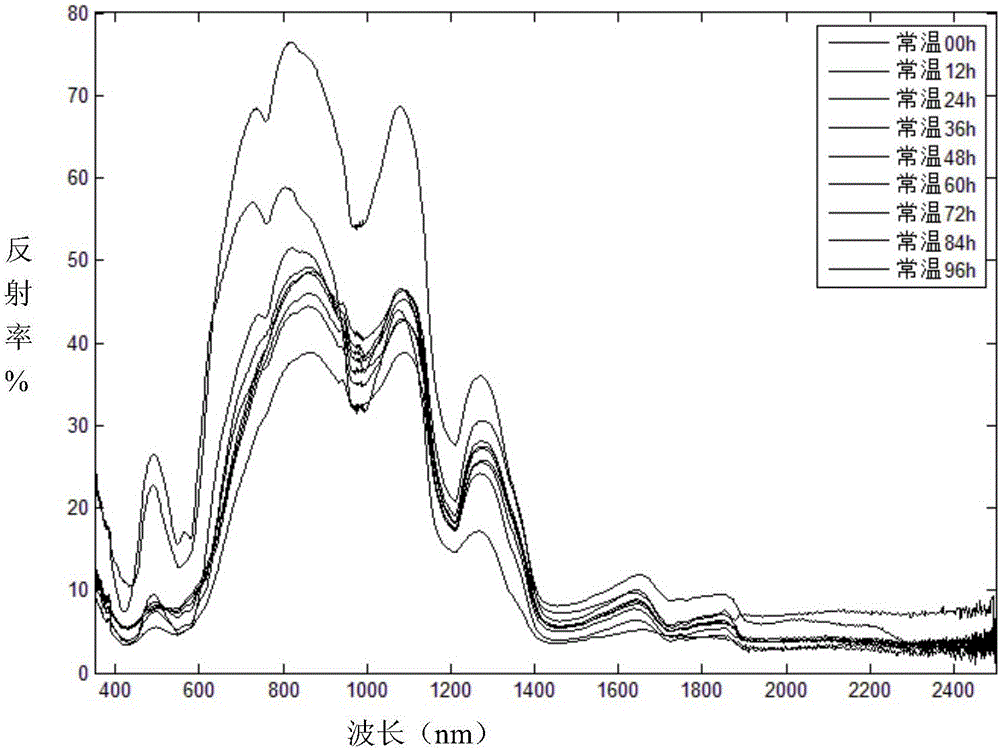Method and system for quickly detecting freshness of edible meat
A technology for edible meat and freshness, applied in the field of detection, can solve the problems of being unable to be used in the consumer market, complex algorithms, expensive instruments, etc., and achieve the effects of improving data processing efficiency, optimizing analysis algorithms, and increasing computing speed
- Summary
- Abstract
- Description
- Claims
- Application Information
AI Technical Summary
Problems solved by technology
Method used
Image
Examples
Embodiment 1
[0054] The sample detected in this embodiment is pork, and the data processing flow is as follows figure 1 .
[0055] S1 activates the light source and the miniature hyperspectral sensor to obtain the original hyperspectral data of the edible meat sample to be detected; the portable spectrometer obtains the hyperspectral reflectance curve of the pork sample to be identified in the preset waveband, and the spectral range covers 400-2500nm.
[0056] Pork samples were placed under normal temperature and refrigerated conditions, and tested every 12h between 0~96h, such as image 3 , Figure 4 The time marked in the inner text box.
[0057] S2 performs smoothing preprocessing on the spectral curve; in this embodiment, an N=5 neighborhood average filter is selected to remove the influence of random noise. The specific formula is as follows:
[0058]
[0059] Where R i Is the reflection value at the center wavelength after smoothing, N is the total number of bands in the neighborhood window, ...
Embodiment 2
[0067] In this embodiment, the freshness evaluation index can be used to effectively classify the freshness levels of meat samples. Threshold segmentation method is used to set thresholds for normal temperature and refrigerated samples to classify freshness. When applied to the consumer market, three levels of freshness are determined, and two thresholds T1 and T2 are set as the criteria for dividing the freshness levels of meat samples. F It is classified as stale meat at T2. The specific values of T1 and T2 are set with reference to the standards of relevant regulatory authorities.
[0068] After the sample to be tested is tested and the original hyperspectral data is obtained, the data is processed according to steps S2 to S4 in Example 1 to obtain the freshness characteristic index F value and determine which level it belongs to.
Embodiment 3
[0070] See figure 2 , A system for quickly detecting the freshness of edible meat, including a light source module, a spectral data acquisition module, a spectral data analysis module, a meat freshness detection module, and a result display module.
[0071] The light source module includes a miniature halogen lamp, and the spectral data acquisition module includes a miniature hyperspectral sensor, all of which are integrated in the smartphone. The result display module refers to the processing and analysis of the results obtained by the cloud data processing center through the wireless network back to the smart phone for display. The result display module uses the screen that comes with the smartphone.
[0072] The spectral data analysis module refers to that the cloud data processing center calls a pre-set spectral data preprocessing model, feature transformation model, freshness index calculation model, etc., to process and analyze the raw spectral data of the meat. This module...
PUM
 Login to View More
Login to View More Abstract
Description
Claims
Application Information
 Login to View More
Login to View More - R&D
- Intellectual Property
- Life Sciences
- Materials
- Tech Scout
- Unparalleled Data Quality
- Higher Quality Content
- 60% Fewer Hallucinations
Browse by: Latest US Patents, China's latest patents, Technical Efficacy Thesaurus, Application Domain, Technology Topic, Popular Technical Reports.
© 2025 PatSnap. All rights reserved.Legal|Privacy policy|Modern Slavery Act Transparency Statement|Sitemap|About US| Contact US: help@patsnap.com



